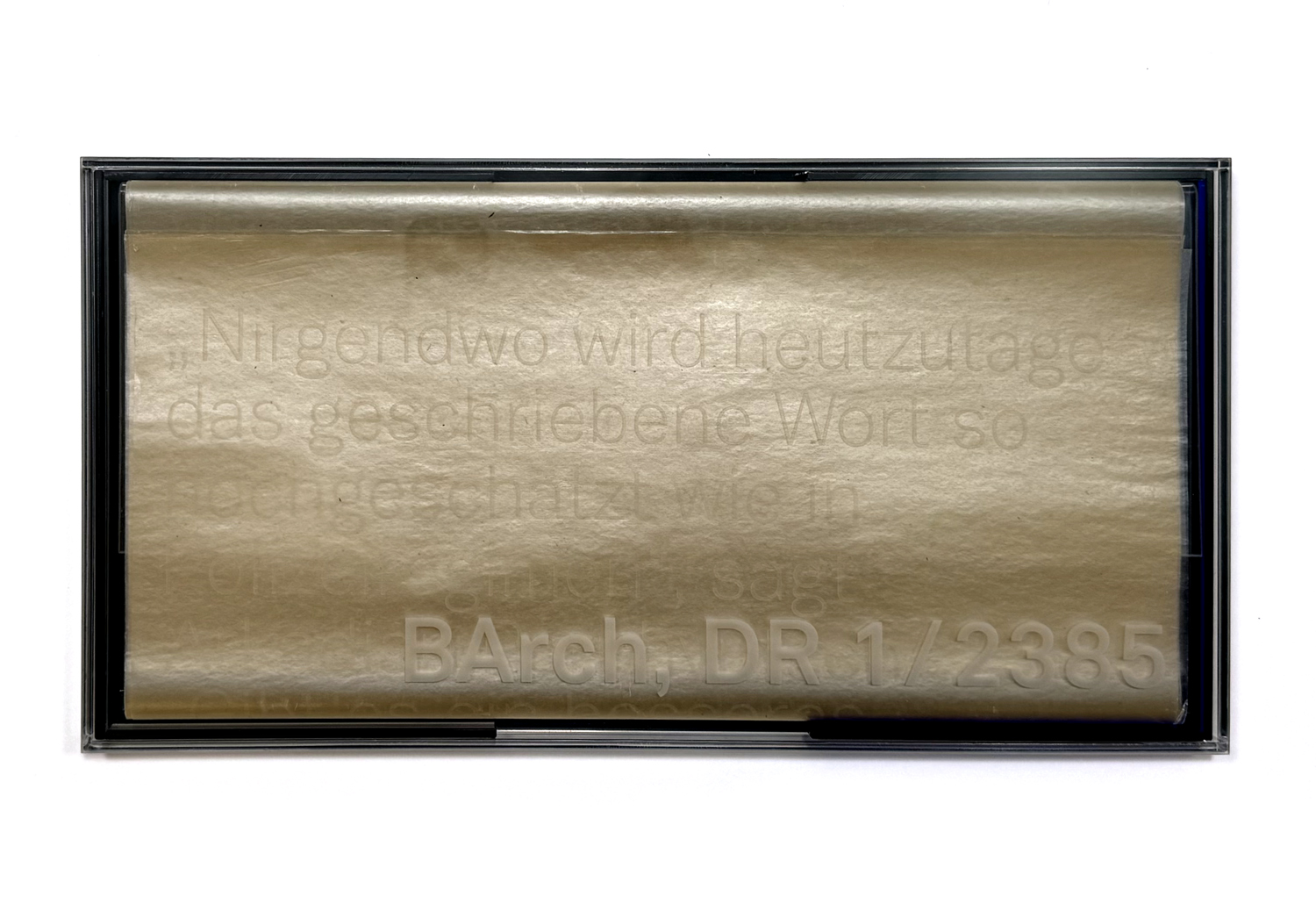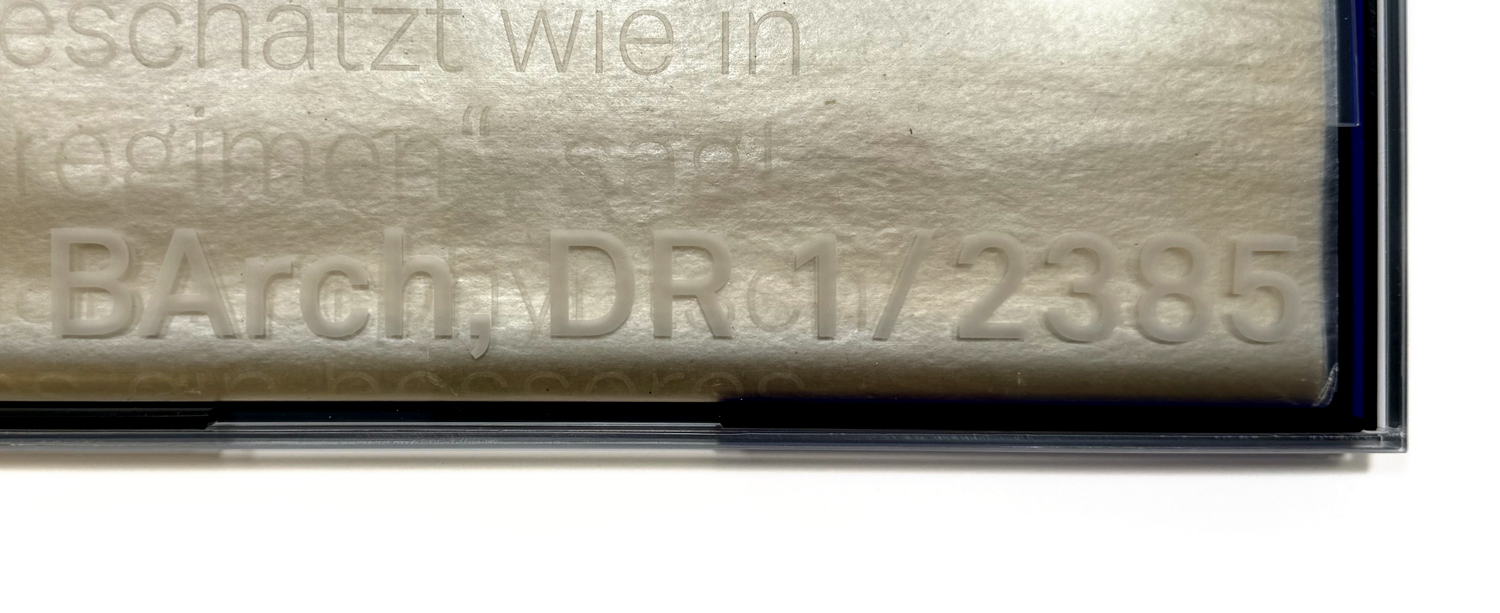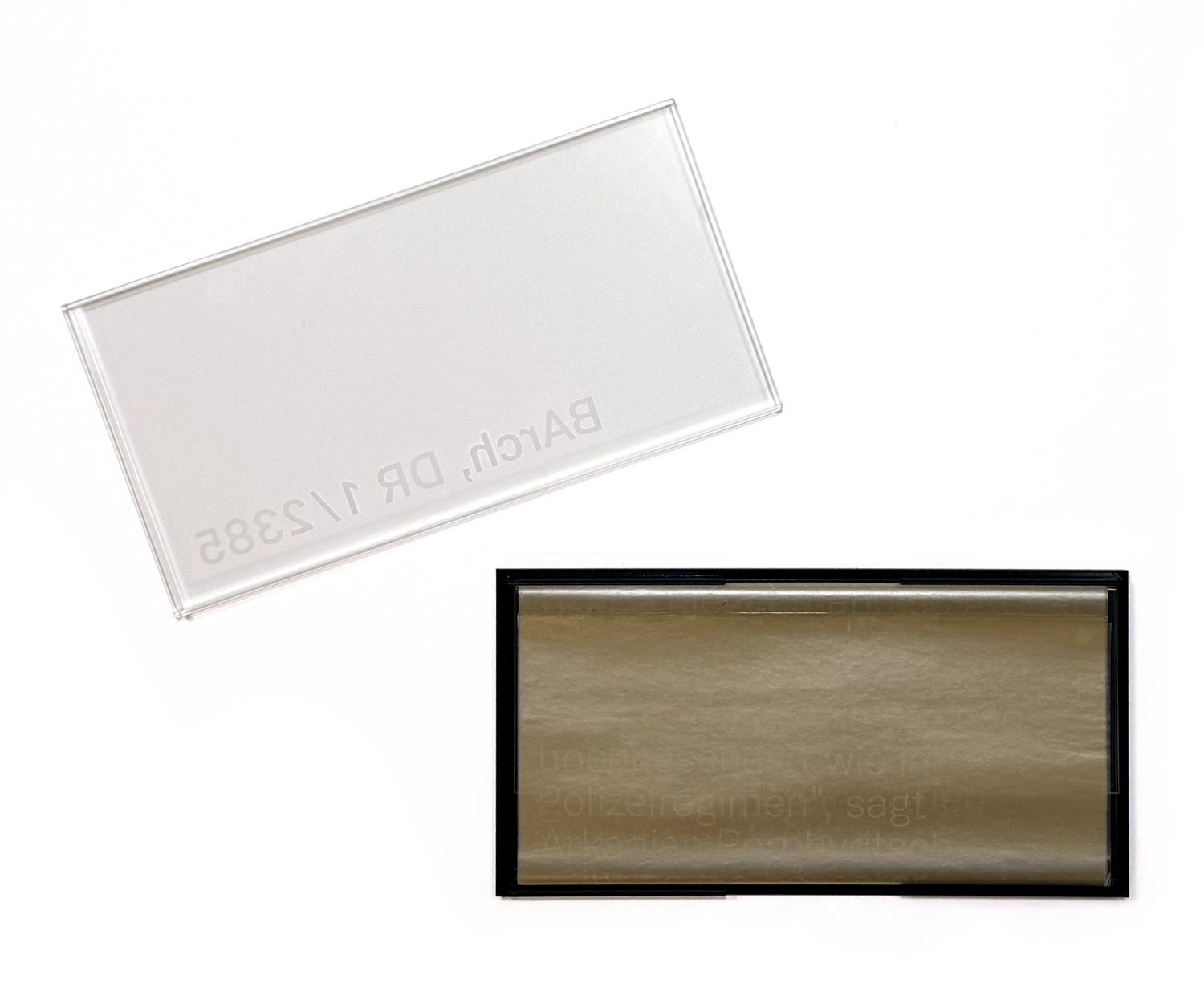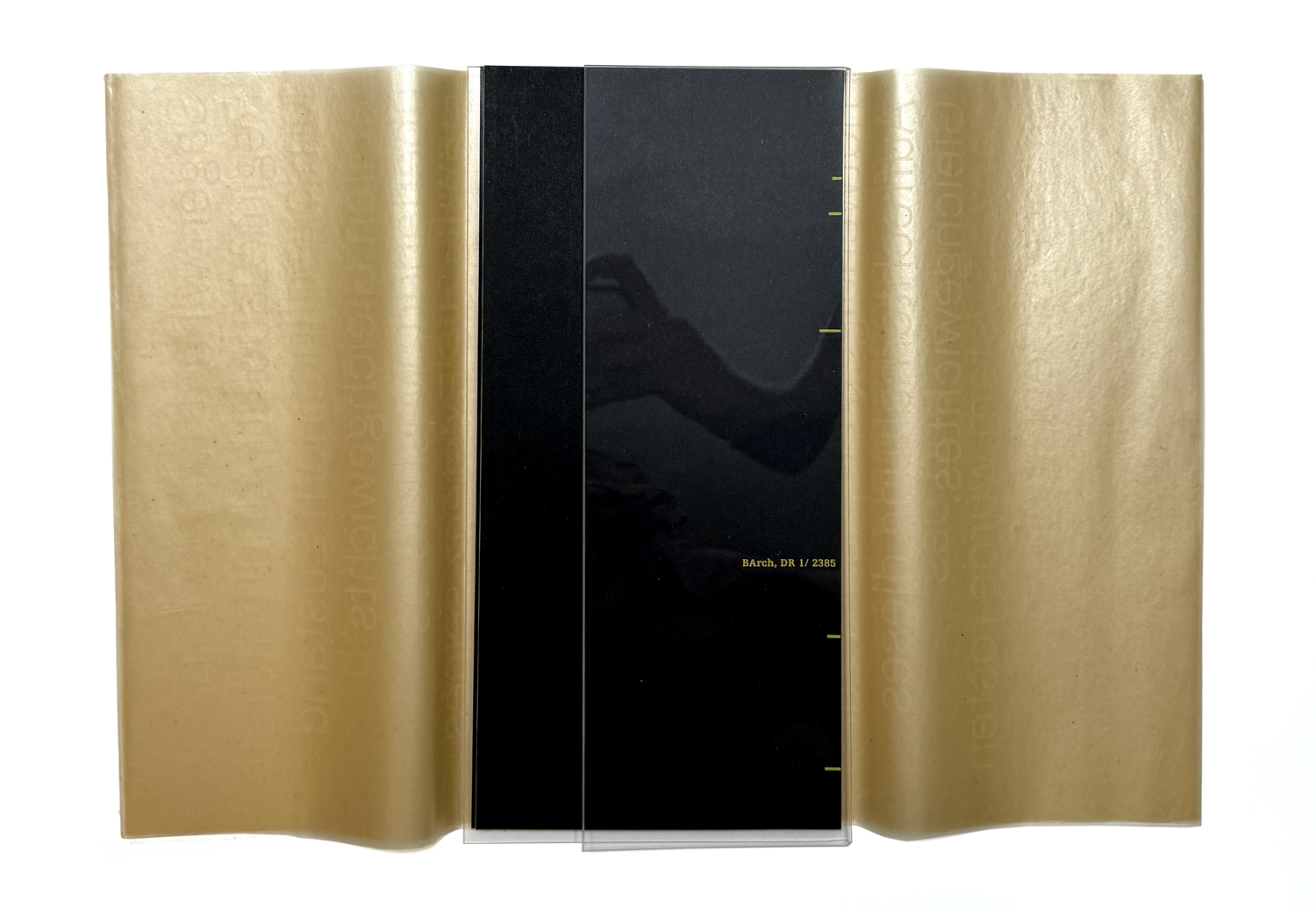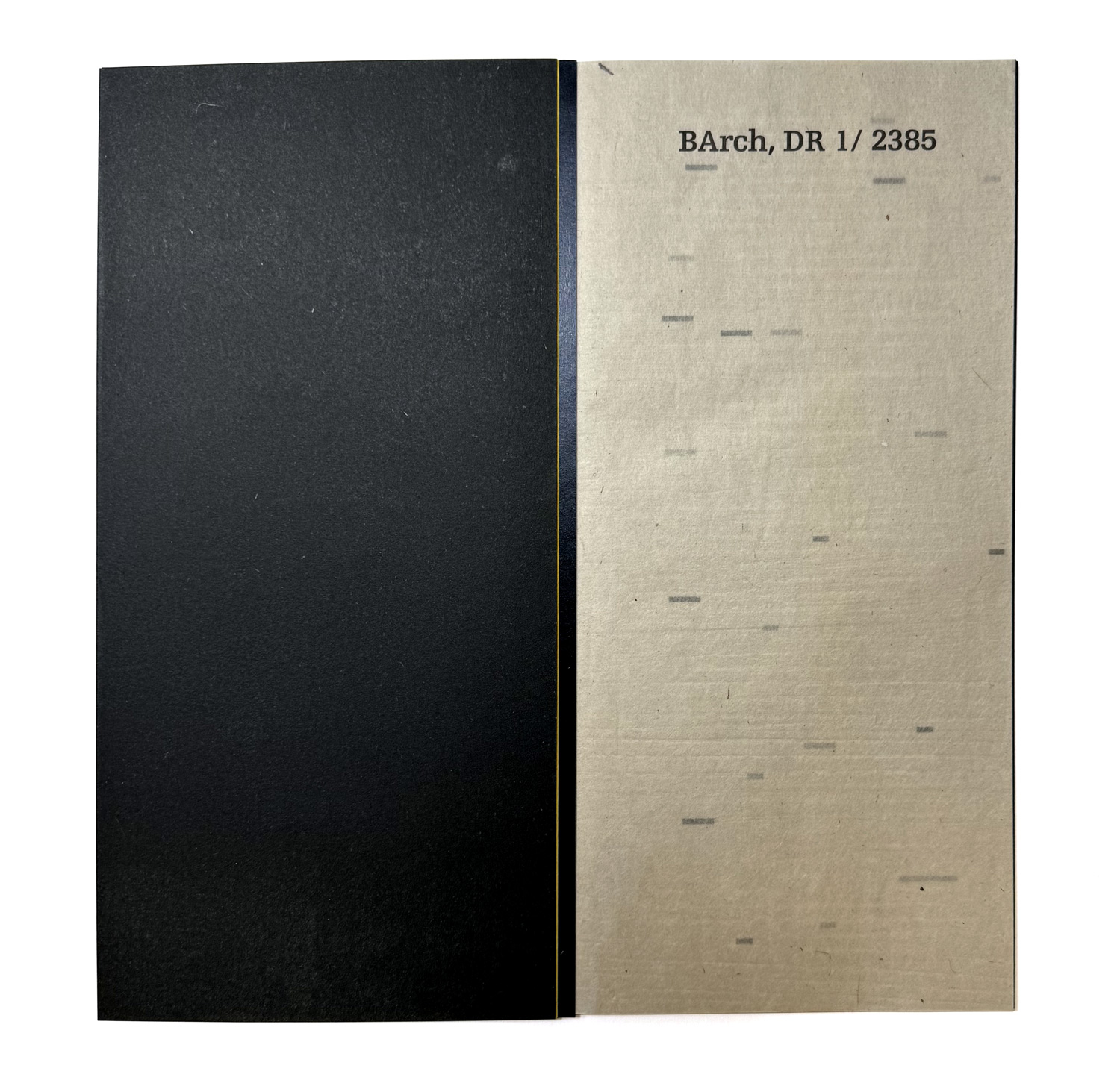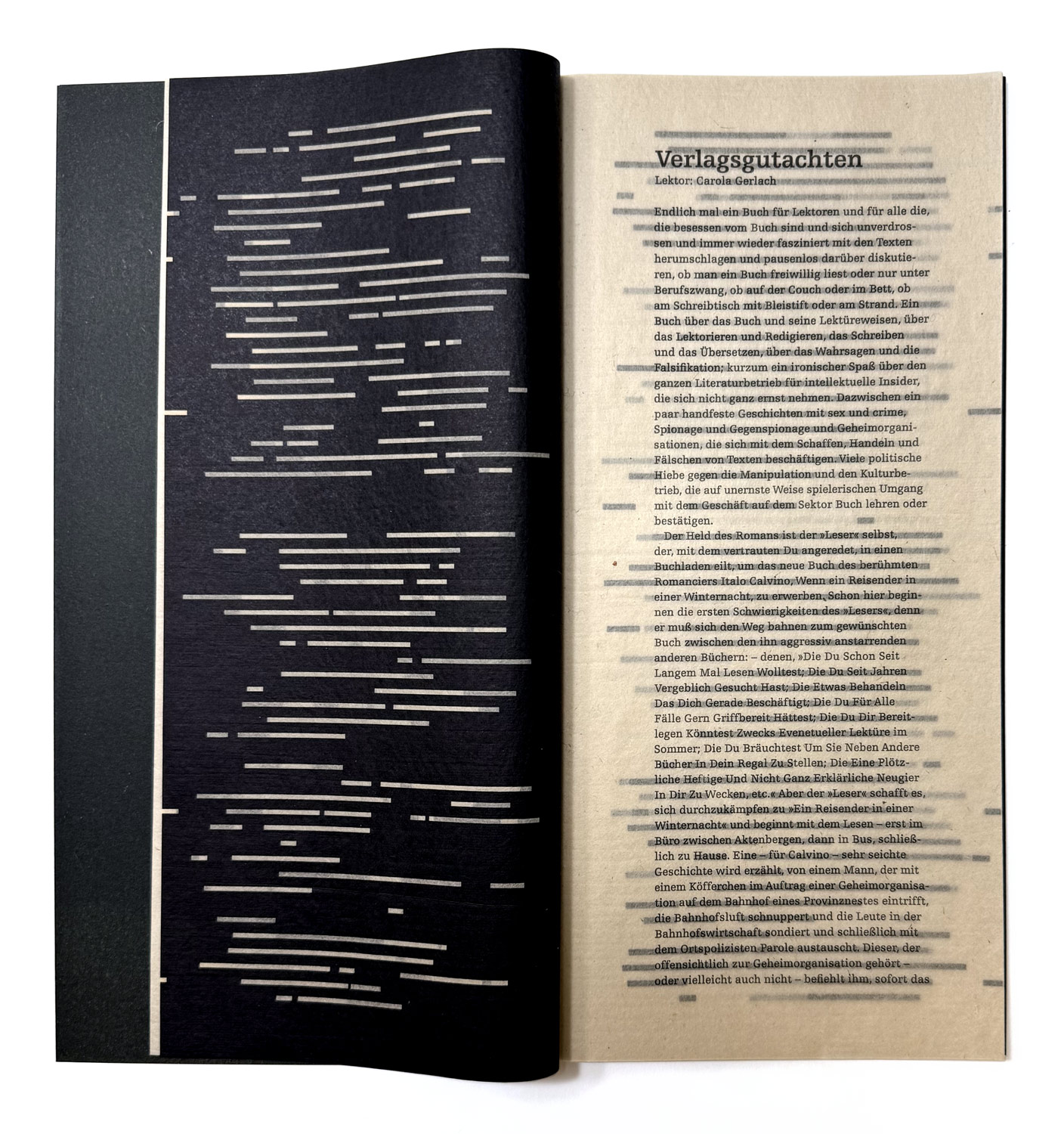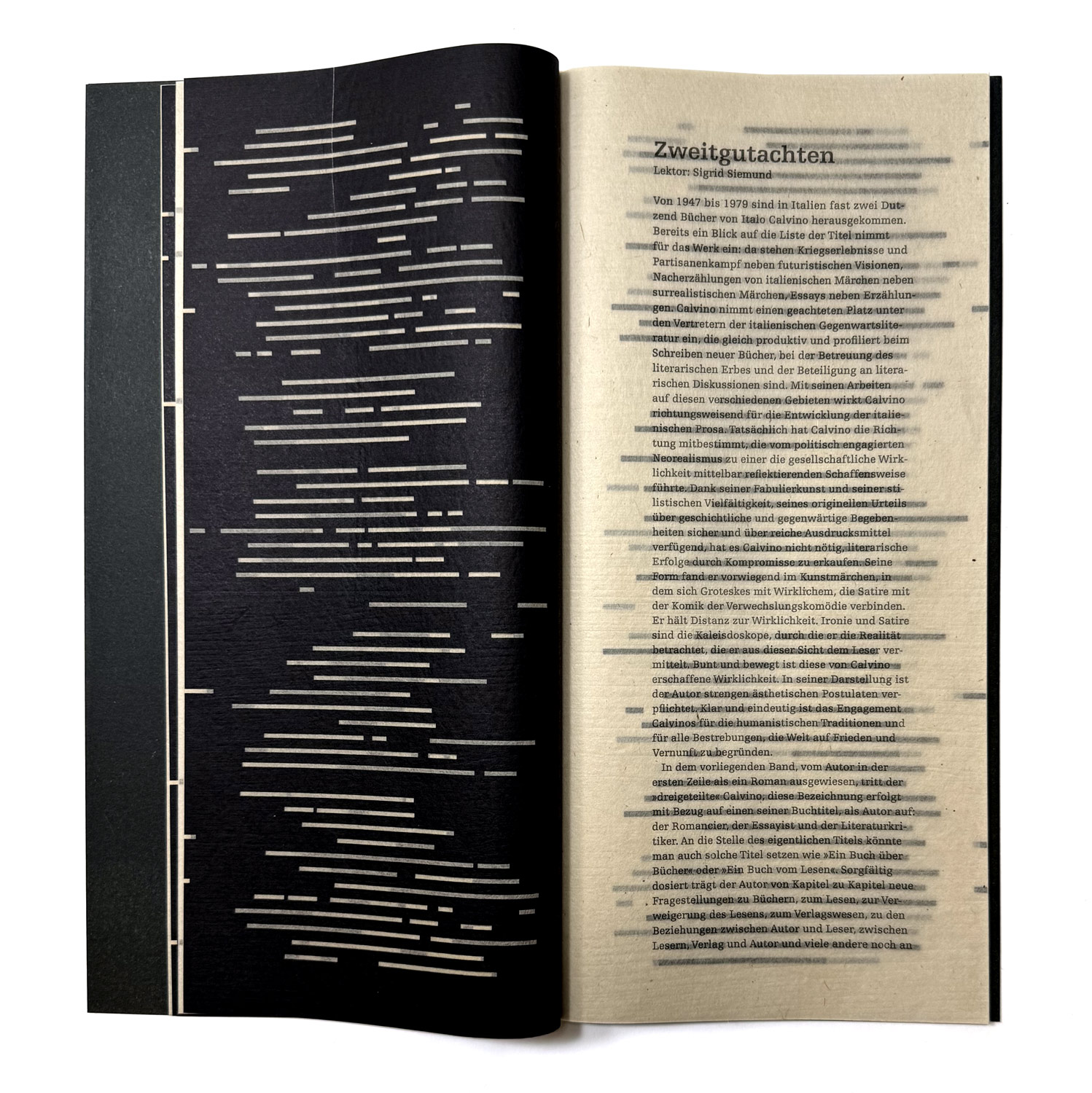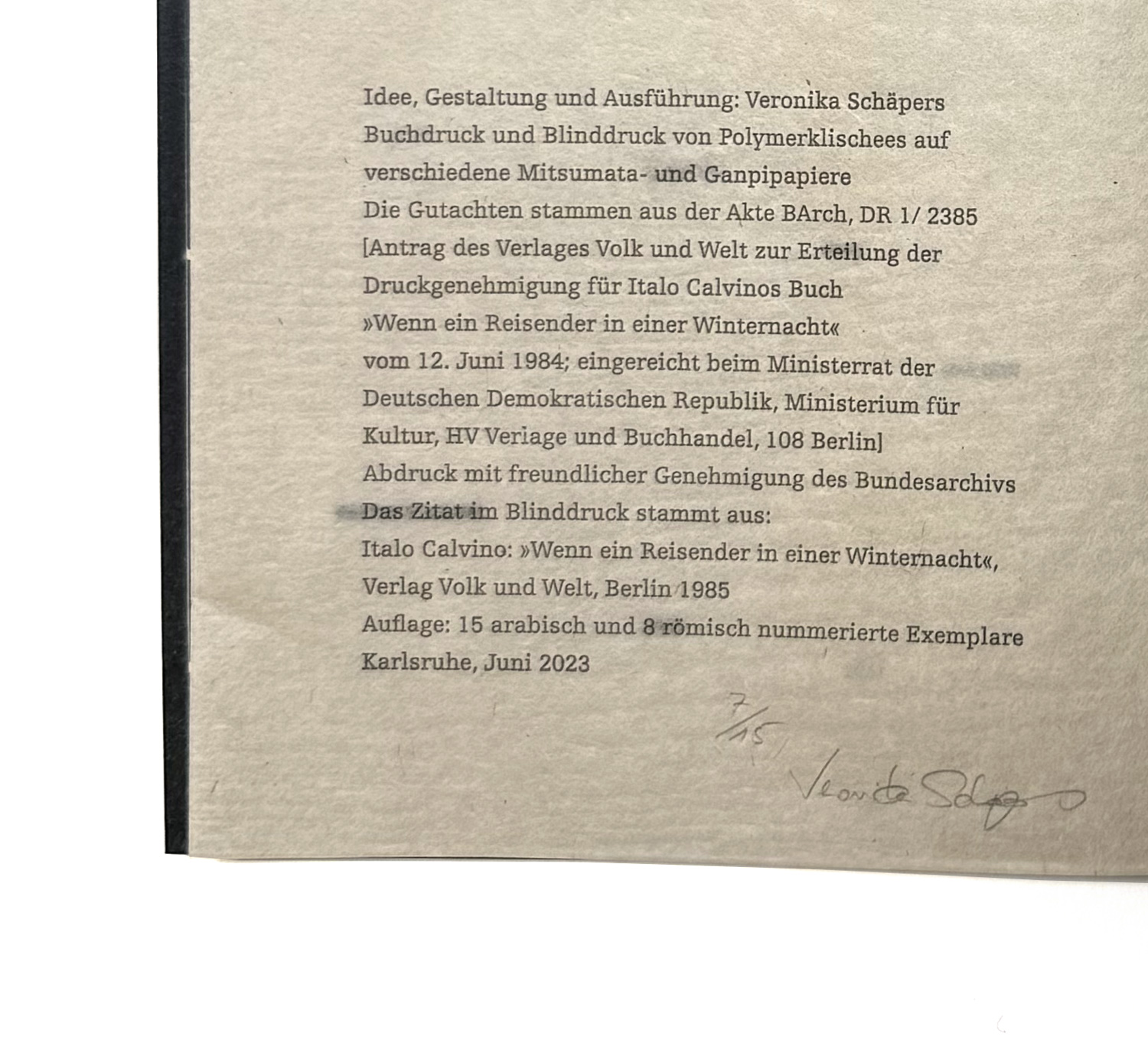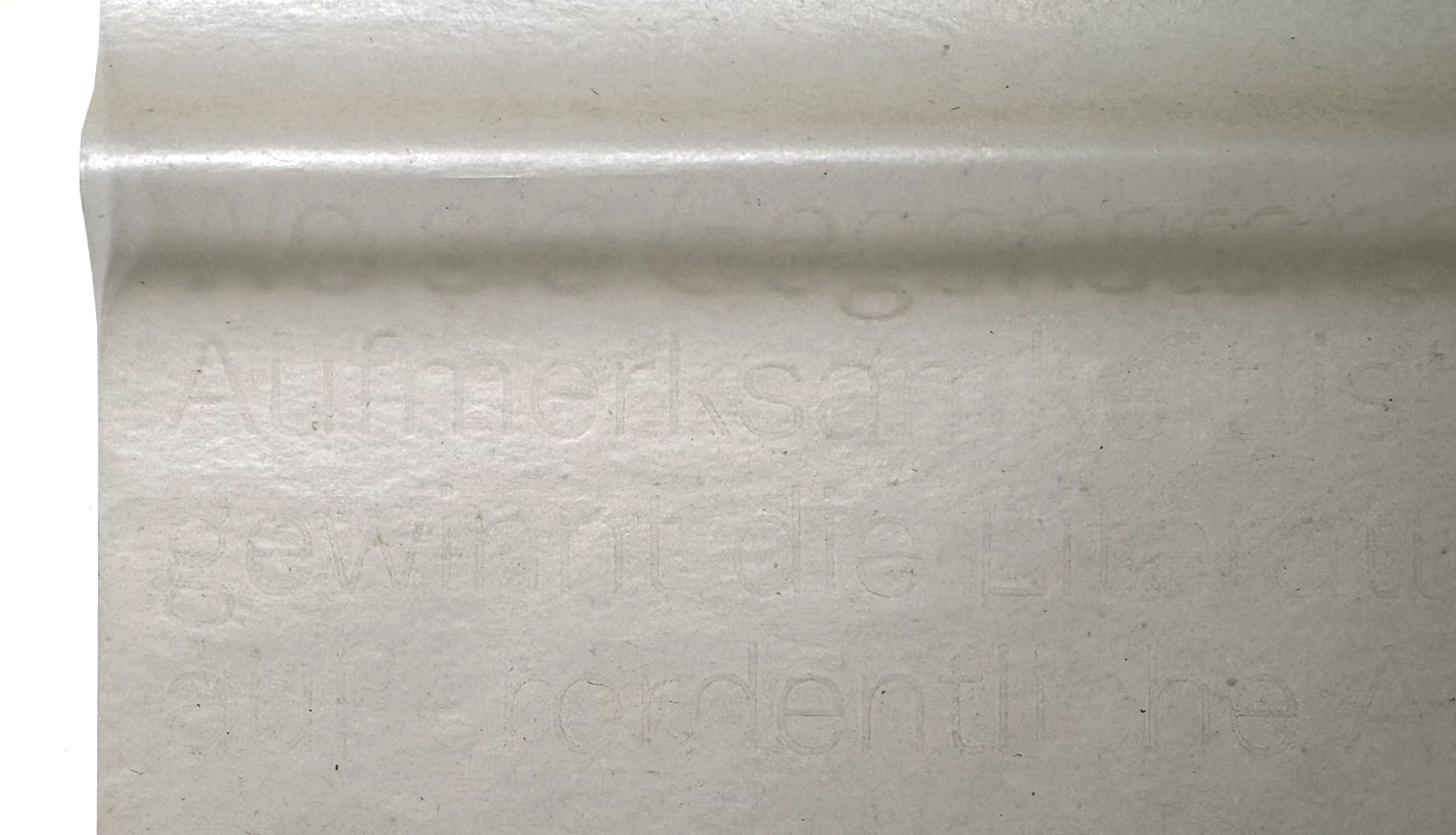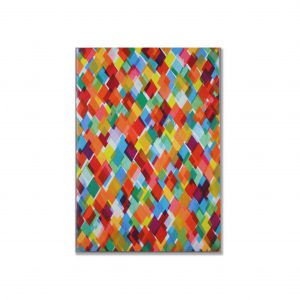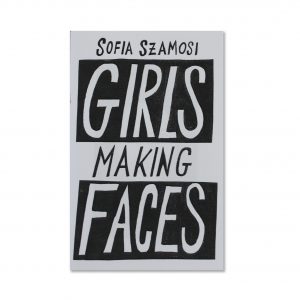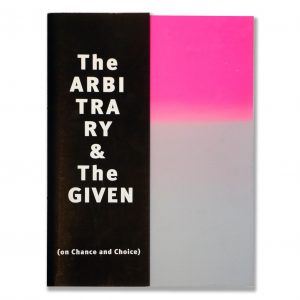BArch, DR 1/2385
BArch, DR 1/2385
Date
2023
Edition Size
15
Media
Embossing, Silkscreen
Paper
Enduro Ice paper, Mitsumata, Rayon paper
Pages
25
Location
Karlsruhe, Germany
Enclosure
Acrylic Box
Collection
Collection Development, Limited Edition Artists Books$ 2,100.00
1 in stock
View Collectors
Clark Art Institute
While exploring the topic of censorship, Schäpers came across the print approval process in the East German publishing industry and the efforts of many GDR publishing-house employees to circumvent censorship through clever argumentation.
An example of a GDR publication that was released despite critical content is the novel If On A Winter’s Night A Traveler by the Cuban-born, Italian-raised author Italo Calvino. Calvino describes, among other things, the censorship authority of a repressive state and its chief censor Arkadian Porphyritsch, which is not dissimilar to the system in the GDR or Soviet Union at the time. In this artist’s book, Schäpers has quoted a passage from Calvino’s novel in which Arkadian Porphyritsch justifies censorship using the love and appreciation of literature.
Prophyritsch’s praise of the repressive police state is embossed on a total of six thin, waxed papers, the transparent paper turning white at the embossing point. This handmade material was originally used as a stencil for mimeography, a precursor to xerography. The mimeography stencil is representative of the many simple techniques writers and artists used to reproduce texts that had no chance of publication in the official publishing system of the GDR. The six sheets loosely surround and cover a narrow booklet containing two expert assessments from the Federal Archives.
To read Calvino’s text, the reader must open the sheets like a wrapper and fan them out. Through use, the wax layer will gradually acquire small white fractures; over time, the fine and fragile text may become completely illegible, its materiality disappearing, but the content will have impressed itself on the reader. The booklet inside contains the two expert assessments on the novel submitted to the Central Administration for Publishing Houses and the Book Trade, a publisher’s assessment by the editor Carola Gerlach and an external assessment by Sigrid Siemund.
The two texts are printed on handmade Mitsumata paper, which in its coloring and through small inclusions is reminiscent of the thin typewriter papers produced in the GDR. Underneath is another sheet with black block stripes, indicating the constant threat of censorship. The gray cover with yellow embossing is reminiscent of a file, veiled by the thin waxed papers with Calvino’s quote criticizing censorship. Both are kept in a multicolored acrylic box with the file number of the approval process as the title.
Read more about BArch, DR 1/2385 here.


